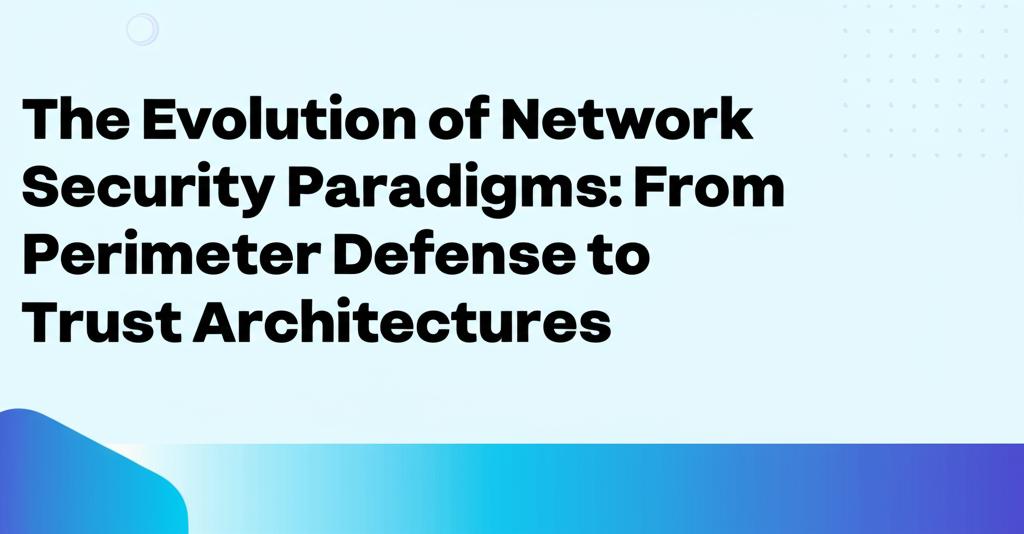The landscape of network security has undergone a dramatic transformation. For decades, the dominant approach resembled building a digital fortress, known as perimeter defense. This model operated on a simple principle: trust everything inside the network and distrust everything outside. Firewalls, VPNs, and intrusion detection systems acted as the walls and gatekeepers, meticulously controlling traffic entering and leaving the organization's defined network boundary. If you were inside the "castle," you were generally considered safe and granted broad access.
However, the digital world refused to stay confined within these static walls. The rise of cloud computing, the explosion of remote workforces, the proliferation of mobile and IoT devices, and increasingly complex hybrid infrastructures effectively dissolved the traditional network perimeter. Suddenly, critical data and applications resided everywhere, accessed by users and devices scattered globally. This shift exposed the fundamental flaws of the perimeter model. Its static nature couldn't adapt. Relying on a single point of defense became insufficient as threats grew more sophisticated, capable of originating from within the network itself. Once breached, attackers often found easy lateral movement inside the supposedly trusted zone. The "castle-and-moat" strategy, while a necessary first line, proved inadequate as an all-encompassing solution.
In response to these challenges, a new paradigm emerged: Zero Trust Architecture (ZTA). Zero Trust represents a fundamental shift in security philosophy, operating under the core principle of "never trust, always verify". It discards the outdated notion of a trusted internal network versus an untrusted external one. Instead, ZTA assumes that threats can exist anywhere, both inside and outside the traditional network boundaries. It mandates strict verification for every access request, regardless of origin. Trust is never implicit; it must be continuously earned and validated.
The Zero Trust model is built upon several key principles:
- Continuous Verification: Every user, device, and application must be authenticated and authorized before accessing any resource, every single time. Trust is not granted based on location (like being on the internal network).
- Least Privilege Access: Users and devices are granted only the minimum level of access necessary to perform their specific tasks. This drastically limits the potential damage if an account or device is compromised.
- Microsegmentation: The network is divided into smaller, isolated zones or segments, often down to the individual workload level. This contains breaches by preventing attackers from moving laterally across the network.
- Assume Breach & Continuous Monitoring: ZTA operates under the assumption that breaches are inevitable, or may have already occurred. It requires constant monitoring and validation of network traffic, user behavior, and device health to detect anomalies and potential threats in real-time.
Adopting a Zero Trust architecture offers significant advantages in today's threat landscape. It enhances the overall security posture by reducing the attack surface and making it harder for attackers to succeed. By limiting access and preventing lateral movement, it minimizes the potential impact ("blast radius") of a breach. It provides better protection for sensitive data and improves visibility into network traffic and user activity. Furthermore, the granular controls inherent in Zero Trust can help organizations meet stringent regulatory compliance requirements. While sometimes perceived as potentially hindering, modern implementations often aim to improve user experience through adaptive authentication methods, applying checks only when necessary. Crucially, it provides a security framework inherently designed for modern, distributed IT environments encompassing cloud services and remote access.
Despite its benefits, the transition to Zero Trust is not without hurdles. Implementation can be complex, requiring careful planning and integration of various technologies like identity management, endpoint security, and segmentation tools. Integrating ZTA principles with legacy systems often poses significant challenges. The shift requires not just technological changes but also a cultural one within the organization, which can sometimes meet resistance. Furthermore, implementing and managing Zero Trust can demand considerable financial investment and skilled personnel, requiring ongoing management rather than a 'set it and forget it' approach.
The evolution from perimeter defense to Zero Trust is not merely a trend but a necessary adaptation to the realities of modern cybersecurity. As threats become more sophisticated – ranging from advanced ransomware and supply chain attacks to AI-powered phishing and insider threats – relying solely on outdated perimeter defenses is no longer viable. Concepts like Secure Access Service Edge (SASE), which combines network and security functions in a cloud-delivered model often incorporating Zero Trust principles, further highlight this ongoing evolution. Embracing Zero Trust is crucial for building resilient, adaptive security strategies capable of protecting organizations in our increasingly interconnected and borderless digital world.

